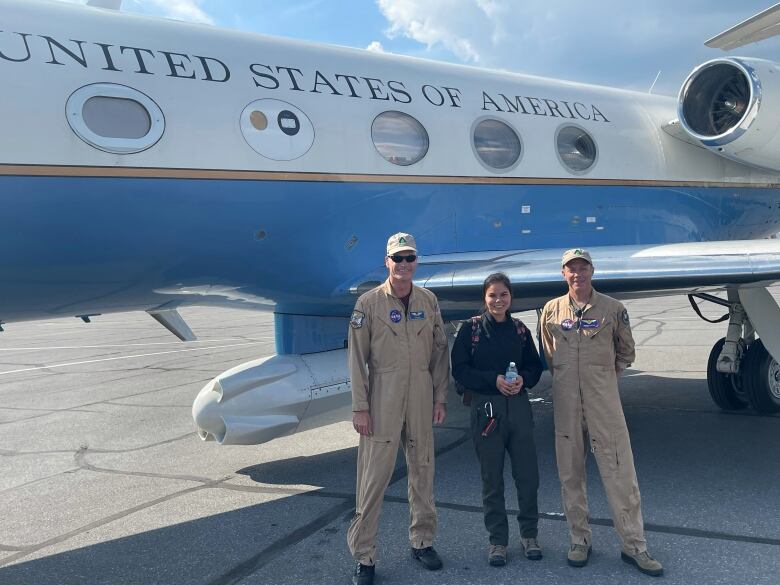N.W.T. youth join NASA flight surveying climate change effects
'It was really cool learning about what they do,' says Jacki Moore-Tsetta, 22

Two Northwest Territories youth joined NASAresearchers aboard a Gulfstream III jet earlier this month as it soared above Great Slave Lake and parts of Nunavut and Alberta.
"It was really cool learning about what they do like what eachperson and each instrument does," said Jacki Moore-Tsetta, a22-year-old environmental technician with the North Slave MtisAlliance.
"It was amazing. They were so eager to show me the ropes,"added Ryan Walsh, also 22 and a summer student with the N.W.T.Centre for Geomatics.
The flight was part of NASA's Arctic-Boreal VulnerabilityExperiment, known as ABoVE, a field campaign in Alaska and WesternCanada that began in 2015. The project aims to help scientists anddecision makers gain a better understanding of the vulnerability andresilience of Arctic and boreal ecosystems to climate change.
NASA scientist Peter Griffith, project manager for ABoVE, saidthe region is "changing first and fastest as the planet heats up."

A study by Finnish researchers published in the journal Natureearlier this month found the Arctic has warmed nearly four timesfaster than the rest of the world over the past four decades.
"NASA's job from the beginning has been to provide soundscientific information about the Earth as a planetary system to
decision makers of all sorts," Griffith said. "We care a lot thatpeople in general not just in Canada and not just in the U.S. butaround the worldhave good information about a changing planet."
Carrie Worth, a research pilot with NASA's Armstrong FlightResearch Center in California, said the project studies Earth "fromleaf to space" using data collected from the ground, flights andsatellites.
Work in the N.W.T. this summer included tracking changes in areasaffected by wildfires in 2014, the territory's worst season onrecord.
'It broadened my horizons'
Moore-Tsetta, who is a member of the Yellowknives Dene FirstNation, said she remembers 2014 as a "terrible year" because shehas asthma and the sky was red for most of the summer.
In addition to taking part in the flight, she recently joined ateam of NASA researchers in the field examining vegetation
disturbances and changes to the permafrost and soil moisture.
"I think it's good that they started this project," she said."It's really helpful to know what's going on with the world,especially with all the fires because there is CO2 and methanegetting released in the air."
Walsh, who is from Yellowknife and studying math at theUniversity of Lethbridge, said he plans to take an extra minor in geography after his experience this summer.
"It broadened my horizons so much. I've been introduced to aworld that I never knew existed before," he said.
"I've really fallen in love with this field, even in the pastfour months."
While working in the territory, NASA coordinated with the GermanAerospace Centre's CoMet 2.0 Arctic mission. Over six weeks inAugust and September, the project is using aircraft-basedinstruments to measure carbon dioxide and methane emissions in theNorth.
Some Yellowknife residents were able to speak to NASA and GermanAerospace Centre personnel, as well as tour the aircraft, during anopen house earlier this month.
This story was produced with the financial assistance of the Metaand Canadian Press News Fellowship.












_(720p).jpg)


 OFFICIAL HD MUSIC VIDEO.jpg)
.jpg)



























































































